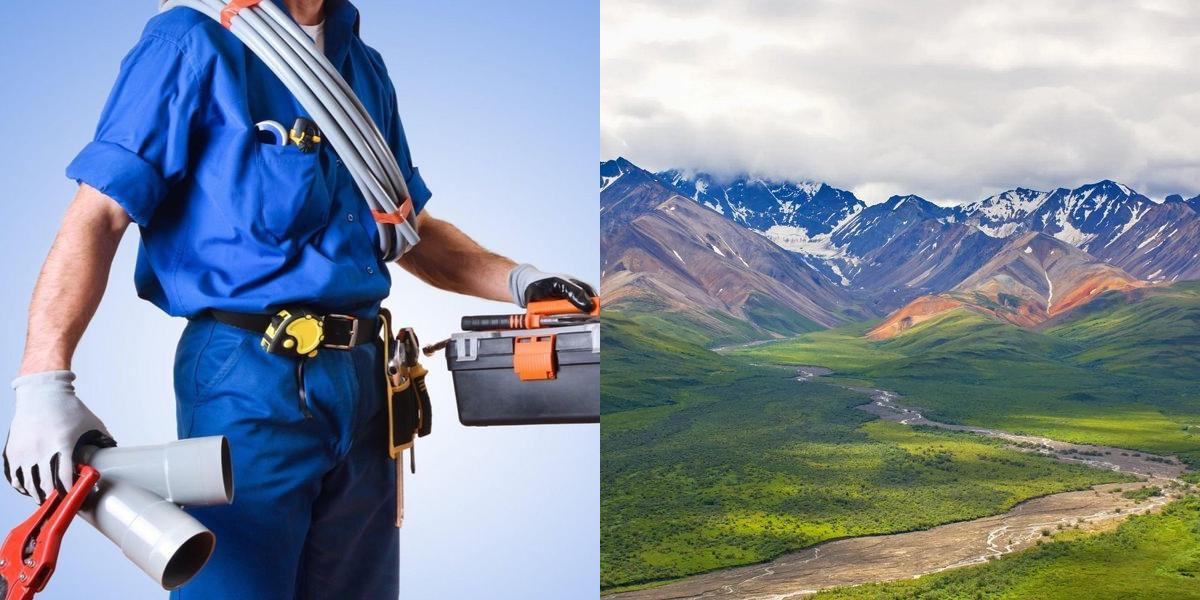How to Become a Plumber in Alaska

Plumbing is a skilled trade that involves installing, repairing, and maintaining water supply systems, drainage systems, and related fixtures. Plumbers play a crucial role in ensuring the smooth functioning of these systems in both residential and commercial buildings.
Step 2: Network and Make Connections
Networking is a valuable tool for finding job opportunities in any field, including plumbing. Reach out to industry professionals, attend trade shows and conferences, and join professional organizations to meet and connect with others in the industry.
Building relationships with experienced plumbers and industry leaders can provide valuable insights, mentorship opportunities, and potential job leads. Don't underestimate the power of networking in your job search.
Step 3: Look for Job Openings
There are several ways to find job openings in the plumbing industry. Start by checking online job boards, such as Indeed or Monster, for plumbing positions in your area. You can also visit the websites of local plumbing companies and check if they have any job openings listed.
In addition to online job boards, consider reaching out to local plumbing unions or associations. They often have resources and job listings specifically tailored to plumbers. Networking with other plumbers or trade professionals can also lead to job opportunities that may not be advertised publicly.
Step 4: Prepare for Interviews
Once you start getting interviews, it's crucial to be prepared. Research the company you're interviewing with and familiarize yourself with their services, projects, and values. Be ready to discuss your experience and qualifications in detail, showcasing your knowledge and skills.
Prepare answers to common interview questions, such as how you handle difficult situations, how you prioritize tasks, or how you stay up-to-date with plumbing codes. Additionally, be prepared to demonstrate your practical skills through a hands-on test or a technical interview.
Step 5: Gain Experience and Continue Learning
Even after you secure a job as a plumber, it's important to continue gaining experience and expanding your knowledge in the field. Plumbing is a constantly evolving industry, with new technologies and techniques emerging regularly.
Consider taking additional courses or attending workshops to further develop your skills. Stay updated on the latest plumbing codes and regulations to ensure you're providing the highest quality work to your clients. Continuing education and professional development will not only enhance your skills but also open doors to better job opportunities and career advancement.
Career Paths and Opportunities after Becoming a Plumber
Once you become a certified plumber, there are several career paths and opportunities available to you. Here are some potential avenues you can explore after establishing yourself in the plumbing industry.
1. Residential Plumbing
Working as a residential plumber involves installing, repairing, and maintaining plumbing systems in private homes and apartment buildings. This career path offers a wide range of job opportunities, from basic repairs and installations to more complex projects, such as bathroom or kitchen renovations.
Many residential plumbers eventually open their own plumbing businesses, allowing them to have more control over their work and potentially earn higher income. This path requires not only excellent plumbing skills but also strong customer service and business management abilities.
2. Commercial Plumbing
Commercial plumbers work on larger-scale projects, such as office buildings, hotels, hospitals, and schools. They install and maintain plumbing systems in commercial and industrial settings, including water supply, drainage, and sewage systems.
Working as a commercial plumber often involves collaborating with architects, engineers, and construction teams to ensure the plumbing systems meet the specific needs of the building. This career path can offer more stability and consistent work, as large-scale construction projects are often ongoing.
3. Service and Repair Plumbing
Service and repair plumbers specialize in diagnosing and fixing plumbing issues. They respond to emergency calls, conduct assessments, and perform repairs on various plumbing systems. This career path requires excellent troubleshooting skills and the ability to work efficiently under pressure.
Service and repair plumbers may work for plumbing companies or as independent contractors. They often have the flexibility to set their own hours and take on a variety of projects. This path is ideal for those who enjoy problem-solving and working directly with clients.
4. Government or Municipal Plumbing
Working as a government or municipal plumber involves maintaining and repairing plumbing systems in public facilities, such as schools, government buildings, and parks. These plumbers ensure that the water supply, sewage, and drainage systems in these facilities are functioning properly.
Government or municipal plumbers may also be responsible for inspecting plumbing systems to ensure compliance with building codes and regulations. This career path offers stability and the opportunity to serve the community.
5. Teaching and Training
After gaining extensive experience as a plumber, you may consider a career in teaching and training. Many trade schools and community colleges offer plumbing programs and are in need of qualified instructors. This path allows you to share your knowledge and skills with aspiring plumbers, helping to shape the next generation of professionals in the field.
Teaching and training positions may also be available within apprenticeship programs or industry organizations. This career path offers the opportunity for personal and professional growth while making a significant impact on the future of the plumbing industry.
Final Thoughts
Becoming a certified plumber is a rewarding and lucrative career choice. By following the steps outlined in this guide, you can obtain your plumber certification and start your journey in the plumbing industry. Remember to research the specific requirements in your state, complete an apprenticeship program, fulfill educational requirements, pass the certification exam, and apply for licensure.
Once you're certified, use networking, job boards, and professional organizations to find job openings in the plumbing field. Prepare for interviews, showcase your skills and experience, and continue learning and gaining experience to advance your career. Whether you choose to specialize in residential or commercial plumbing, service and repair, government plumbing, or teaching and training, there are numerous opportunities for growth and success in the plumbing industry.
Are you thinking about a job change or wanting to learn more about different career paths? Feel free to check out these additional articles:





